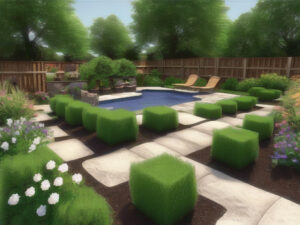How Has Computerized Design Improved Landscaping?
From Hand Drafting to Digital Designs
Landscape design has undergone a significant transformation from traditional hand-drawn sketches to modern digital designs. In the past, designers relied on manual drafting techniques, which were time-consuming and limited in precision. With the advent of computerized design tools, such as CAD software and modeling programs, landscape professionals can now create intricate designs with enhanced accuracy and efficiency. This evolution has revolutionized the industry, allowing for more intricate and detailed landscape plans that can be easily modified, shared, and presented to clients.
Benefits of Transitioning to Computerized Design
The shift to computerized design in landscaping offers a wide array of benefits for both designers and clients. One of the key advantages is the ability to create realistic 3D models that provide clients with a virtual representation of their future outdoor space. This not only enhances client visualization but also improves communication between designers and their clients, ensuring that the final result meets expectations. Additionally, computerized design allows for precise measurements, accurate cost estimations, and efficient project management, leading to streamlined workflows and timely project delivery. By harnessing the power of technology, landscape professionals can deliver more innovative, customized, and sustainable design solutions that elevate the overall quality of landscaping projects.
Key Features of Computerized Design in Landscaping
Enhanced Visualization Tools

With computerized design tools, landscape professionals can now create realistic and detailed 3D models of landscaping projects. These tools allow clients to visualize the final outcome more accurately, making it easier for them to provide feedback and make decisions. By using advanced software, designers can showcase various design elements such as plants, hardscapes, and lighting, giving clients a vivid representation of the proposed landscape.
Precision and Accuracy in Planning
Computerized design has brought a significant improvement in the precision and accuracy of landscaping plans. By utilizing CAD software and modeling programs, designers can ensure that measurements are precise, layouts are exact, and every detail is accounted for. This level of accuracy not only enhances the quality of the final design but also streamlines the planning process, resulting in more efficient project management and cost estimations.
The Impact on Sustainability and Eco-Friendly Practices
Efficient Use of Resources
Computerized design plays a crucial role in maximizing the efficient use of resources in landscaping projects. With accurate measurements and precise planning facilitated by CAD software and modeling programs, professionals can minimize waste and ensure optimal utilization of materials. This results in cost savings, reduced environmental impact, and increased sustainability in landscape construction and maintenance.
Utilizing digital tools for layout optimization and material planning allows for streamlined processes, reducing the need for excessive resources and enhancing overall project sustainability. By creating detailed 3D models, landscape designers can visualize and fine-tune designs to eliminate inefficiencies, leading to more sustainable outcomes that align with eco-friendly practices.
Promoting Biodiversity with Data-Driven Decisions

Incorporating computerized design enables landscape professionals to make data-driven decisions that promote biodiversity and enhance ecological sustainability. By analyzing environmental data and utilizing digital modeling tools, designers can develop landscapes that support diverse plant and animal species, contributing to a healthier ecosystem.
Through the integration of geospatial information and ecological parameters into design software, professionals can create landscapes that prioritize biodiversity conservation. By harnessing the power of technology to assess and map ecological features, landscape designers can make informed decisions that enhance the natural habitat and promote sustainable practices in landscaping projects.
Computerized design has significantly advanced the field of landscaping, revolutionizing how professionals conceptualize, plan, and execute projects. The precision and efficiency offered by CAD software have elevated design quality and project management practices. Moreover, the emphasis on sustainability and eco-friendly strategies through data-driven decisions showcases the positive impact of technology on resource optimization and biodiversity promotion. Collaboration and communication have been streamlined, leading to enhanced project coordination and client satisfaction. Through successful case studies in urban renewal and residential landscaping, it’s evident that computerized design not only transforms neglected areas into sustainable landscapes but also enhances client engagement and satisfaction through immersive visualizations. The future of landscaping is undoubtedly intertwined with the continued integration of computerized design tools for innovative and sustainable practices.
